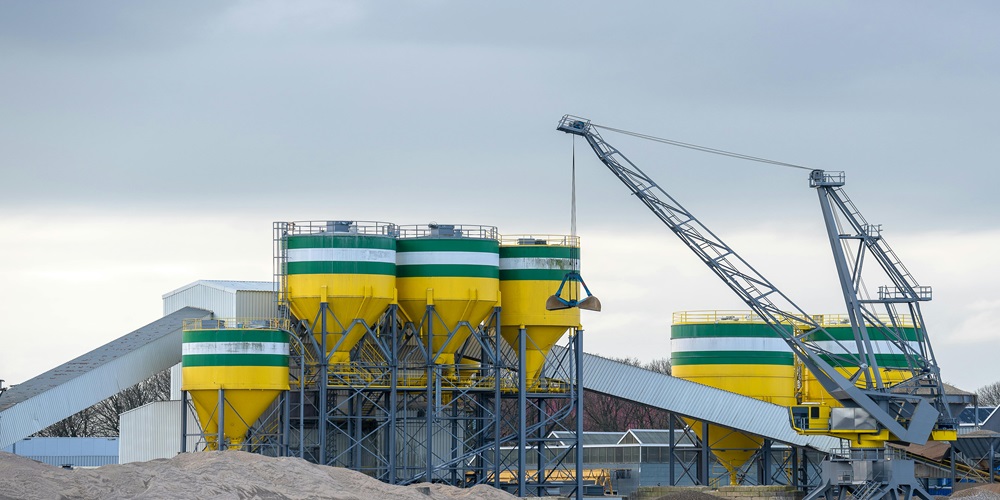Breaking Down the Different Types of Cranes Used in Construction

When it comes to the era of construction, cranes are an essential piece of equipment that can make or break a project. From towering tower cranes to nimble mobile cranes, there are various types of cranes used in construction that serve different purposes. In this blog post, we will break down the different types of cranes and their unique capabilities to help you understand which one is best suited for your next building endeavor. Let’s dive into the world of cranes and elevate your construction knowledge!
Introduction to Cranes in Construction
Welcome to the era of towering giants in the construction industry – cranes! These powerful machines are not only fascinating to watch but also play a crucial role in shaping our skylines and infrastructure. From lifting heavy loads to reaching dizzying heights, cranes are the unsung heroes of any construction project. Let’s delve into the different types of cranes used in construction and unravel their significance in building our modern world. So, buckle up as we soar to new heights with crane technology!
Why are Cranes Important for Construction Projects?
Cranes play a vital role in construction projects, serving as the backbone of heavy lifting and maneuvering tasks. Without cranes, the efficiency and productivity of construction sites would be significantly hindered. These robust machines are essential for transporting materials like steel beams, concrete slabs, and machinery to heights and distances that human labor alone could never achieve.
Their versatility allows them to reach areas that are otherwise inaccessible or challenging for workers. By providing a stable platform for lifting operations, cranes enhance safety on site by reducing the risk of accidents related to manual handling. With their ability to lift heavy loads with precision and speed, cranes streamline construction processes, saving both time and labor costs.
In essence, cranes are indispensable tools that elevate the capabilities of construction teams, enabling them to tackle complex projects with ease and efficiency.
Types of Cranes Used in Construction
Cranes play a crucial role in the construction industry, enabling the lifting and movement of heavy materials with precision and efficiency. There are several types of cranes commonly used on construction sites, each designed for specific tasks and environments.
Mobile cranes are versatile and can be easily transported to different locations within a job site. They are ideal for projects that require flexibility and mobility, such as road construction or building maintenance.
Tower cranes are tall structures that offer exceptional height and lifting capabilities. They are often used in high-rise construction projects where heavy materials need to be lifted to great heights with stability.
Crawler cranes operate on tracks rather than wheels, providing excellent stability on uneven terrain. These cranes are suitable for jobs that require heavy lifting in challenging conditions, like bridge construction or pipeline installation.
Overhead cranes are mounted on beams attached to the ceiling of a building, allowing them to move along a track system. They are commonly used in manufacturing facilities or warehouses for efficient material handling operations.
Mobile Cranes: Features and Uses
Mobile cranes are versatile machines that play a crucial role in construction projects. They feature wheels or tracks, allowing them to move easily around job sites. With their flexibility and mobility, mobile cranes can access hard-to-reach areas where other types of cranes might not be able to operate.
These types of cranes come in various sizes, from compact models for small-scale projects to larger ones for heavy lifting tasks. Mobile cranes are equipped with telescopic booms or lattice booms that can extend to different lengths depending on the requirements of the job.
Their uses range from lifting materials like steel beams and concrete blocks to placing equipment on high-rise buildings. Mobile cranes are also commonly used in road construction, bridge building, and maintenance work due to their ability to travel easily between locations.
Tower Cranes: Characteristics and Applications
Tower cranes are a common sight on large construction sites, standing tall and imposing against the skyline. These cranes are known for their impressive height and lifting capabilities, making them essential for building skyscrapers and other tall structures.
One of the key characteristics of tower cranes is their ability to reach great heights while maintaining stability. They consist of a vertical mast, which can be adjusted to increase or decrease the crane’s height as needed. The horizontal jib arm extends out from the top of the mast, allowing for precise placement of heavy materials.
These cranes are often used in urban areas where space is limited, as they have a small footprint on the ground compared to other types of cranes. Their versatility makes them ideal for lifting materials to different levels of a building under construction.
In addition to their use in constructing high-rise buildings, tower cranes can also be found on infrastructure projects such as bridges and power plants. Their efficiency and reliability make them an indispensable tool for modern construction projects around the world.
Crawler Cranes: Advantages and Limitations
When it comes to construction projects that require heavy lifting and precise positioning in challenging terrains, crawler cranes step up to the plate. These robust machines are equipped with tracks instead of wheels, providing stability and mobility on uneven surfaces like rough terrain or soft ground.
One key advantage of crawler cranes is their ability to lift extremely heavy loads vertically and horizontally with ease. Their lattice boom design allows for impressive reach and height capabilities, making them ideal for tall structures or projects requiring long-distance lifts.
On the flip side, one limitation of crawler cranes is their slower travel speed compared to other types of cranes. Due to their tracked undercarriage, they are not as swift when moving from one location to another on-site. This can potentially impact productivity on a project where frequent repositioning is required.
Despite this drawback, the advantages of crawler cranes often outweigh the limitations in many construction scenarios due to their unparalleled strength and versatility in handling heavy-duty tasks efficiently.
Overhead Cranes: Functionality and Benefits
Overhead cranes are a vital piece of equipment in construction projects, providing efficient lifting and moving capabilities. These cranes are typically mounted on beams that run along the ceiling of a facility, allowing for easy maneuverability and maximizing floor space below.
Their functionality lies in their ability to lift heavy loads vertically and horizontally with precision and control. Overhead cranes can be operated remotely, offering increased safety for operators by keeping them at a distance from the load being lifted.
One key benefit of overhead cranes is their versatility – they can be customized with various attachments to suit different project requirements. Additionally, these cranes help streamline operations by speeding up the process of moving materials around the worksite efficiently.
What Does a Crane Operator Do?
Have you ever wondered what goes on inside the cab of a crane high above a construction site? A crane operator plays a crucial role in ensuring that heavy materials are lifted and moved safely and efficiently. From operating the controls to communicating with ground crew, their job requires precision and focus.
A crane operator must have excellent hand-eye coordination and spatial awareness to navigate the crane’s movements accurately. They follow specific lifting procedures, inspect equipment for safety, and adhere to strict guidelines to prevent accidents. Constant communication with signalers is key to executing lifts smoothly.
In addition to technical skills, operators need good decision-making abilities under pressure. They must assess weather conditions, load capacities, and potential hazards before making each lift. Crane operators undergo rigorous training and certification processes to ensure they can handle the responsibilities of their demanding role.
Safety Precautions When Operating a Crane
When it comes to operating a crane on a construction site, safety should always be the number one priority. There are several key precautions that crane operators must follow to ensure the safety of themselves and those around them.
First and foremost, proper training is essential for crane operators. They must be fully trained and certified to operate the specific type of crane they are using. This includes understanding the equipment, its capabilities, and how to safely maneuver it.
Inspecting the crane before each use is also critical. Checking for any signs of damage or wear and tear can help prevent accidents caused by faulty equipment. Regular maintenance and servicing are necessary to keep the crane in optimal working condition.
Adhering to load capacity limits is crucial for safe operation. Exceeding weight limits can lead to instability and potential collapse, posing serious risks to everyone on-site. It’s important for operators to carefully calculate loads and never take unnecessary risks.
Communication is key when operating a crane. Clear communication between the operator, signal person, and other team members helps ensure that movements are coordinated safely. Following hand signals or radio commands accurately can prevent accidents due to miscommunication.
The Future of Crane Technology in Construction
As technology continues to advance at a rapid pace, the construction industry is also witnessing significant innovations in crane technology. The future of cranes in construction looks promising with the integration of cutting-edge features and functionalities that enhance efficiency and safety on job sites.
One key trend shaping the future of crane technology is the development of smart cranes equipped with sensors and real-time monitoring systems. These advancements allow for better data collection, analysis, and predictive maintenance to prevent potential issues before they occur.
Additionally, automation and remote operation capabilities are revolutionizing how cranes are operated, offering greater precision and control over heavy lifting tasks. This shift towards autonomous operation not only improves productivity but also minimizes risks associated with human error.
Furthermore, advancements in materials used for crane manufacturing are making them lighter yet stronger, improving their load-bearing capacity while reducing environmental impact. As sustainability becomes a top priority in the construction industry, eco-friendly crane designs will likely become more prevalent in the future landscape of construction projects.
Conclusion
In conclusion, cranes are crucial machines in the construction industry and their different types serve specific purposes. From tower cranes for high rise buildings to crawler cranes for heavy lifting, each type has its own unique features that make them suitable for various projects. As technology continues to advance, we can expect even more efficient and advanced types of cranes to be utilized in construction. By understanding the different types of cranes and their capabilities, we can ensure safe and effective use of these powerful machines in our building projects





